How to design a patio in 9 simple steps – create a space that's practical, easy to use and looks good year-round
Whether you're designing a patio from scratch or upgrading an existing one with a new look, don't skip these key steps
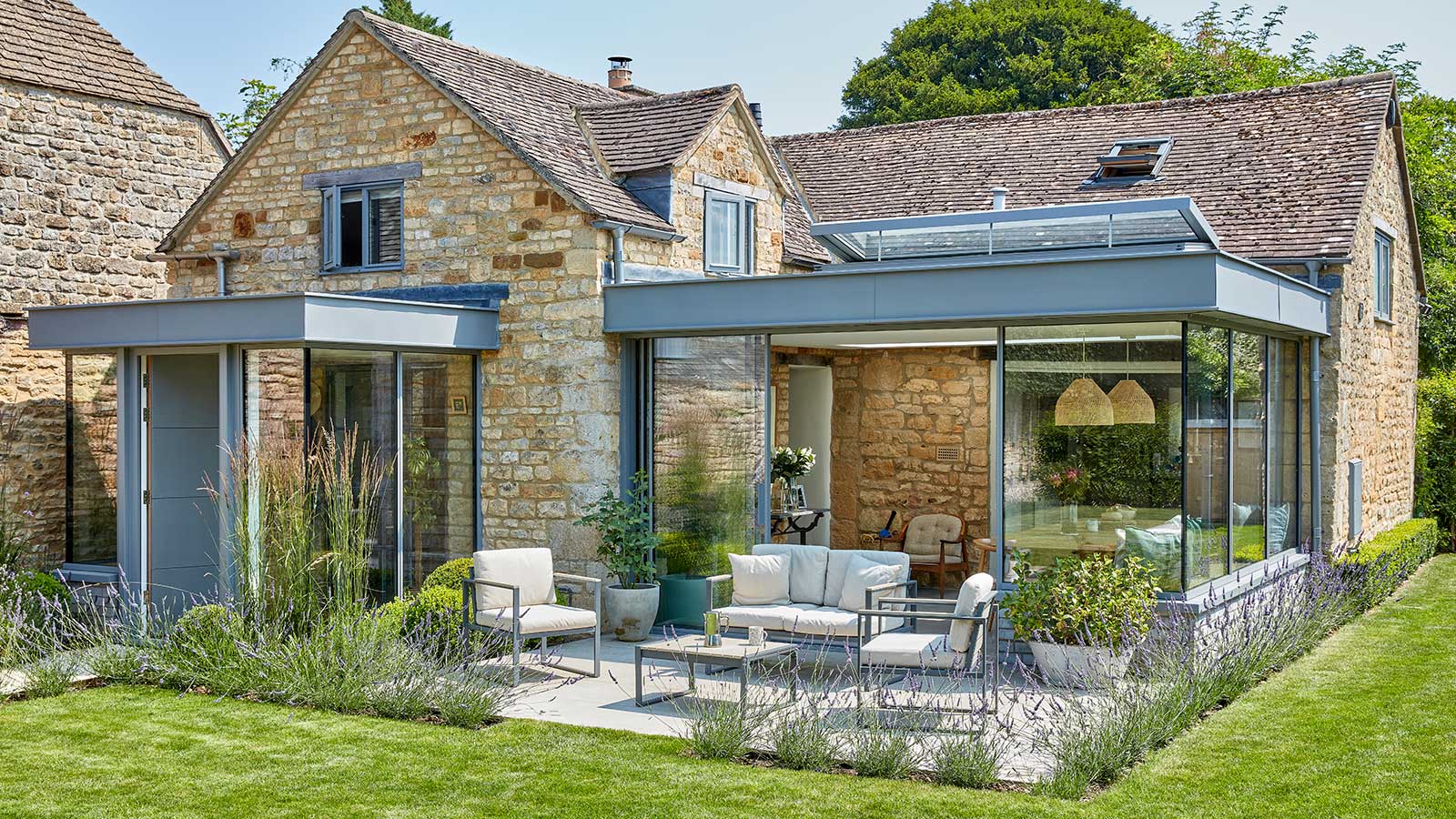
As one of the key areas of your garden, it's important to think carefully about the design of your patio to ensure it not only looks good but also meets the needs of your space.
One of the first considerations for your patio design ideas is what sort of style you want, whether that's a modern and contemporary look that's all about the sleek outdoor kitchen or state-of-the-art entertainment space, or something more relaxed where the planting is integral and it feels more like a secluded retreat to enjoy your morning coffee in peace.
Either way, get the basics in place with a clear idea of the style you want and the design choices such as for hardscaping, lighting and planting will follow. Our step-by-step guide on designing a patio is packed with advice to get your project underway.
1. Decide what the patio will be used for
First think about how you intend to use the patio from day to day, and how you want to live in the space. Then everything should fall into place from there. If you want to install an outdoor kitchen or living room/entertainment space, for example, you will need to factor in practicalities such as power and water. Even if you're designing a small patio as your space is quite limited, make sure you approach the design in the same way.
"Before designing a patio, it's important to think about how you’ll actually be using the space," says John Small of sustainable construction specialists Ty Eco. "Will it be a peaceful place for relaxing, an area for outdoor dining, or a social space for hosting friends and family? Having an understanding of its main purpose early on will help you decide on the size, layout and features."

John Small is a sustainable timber frame specialist at Ty Eco, where he helps homeowners create low-impact, comfortable spaces using natural materials through carefully planned design. With years of hands-on experience in sustainable construction, John understands how outdoor areas like patios can extend the liveability of a home, balancing durability, budget and long-term usability. He regularly advises on material choices, layout and how to make outdoor spaces work for everyday life.

2. Choose the best location for your patio
Once you have established what you're going to be using your patio for choosing the location becomes easier.
If you're planning a patio that's more about relaxation and creating a retreat you can position it further away from the house in a more secluded spot. You’ll want to prioritise privacy, comfort and ambient lighting. If it's more dining-focused, you’ll need plenty of space for a table and chairs, and might want to consider positioning it closer to the house.
Bring your dream home to life with expert advice, how to guides and design inspiration. Sign up for our newsletter and get two free tickets to a Homebuilding & Renovating Show near you.
"Consider if your garden is south or north facing and the intentions of the patio," says hardscaping expert Isabel Fernandez. "Do you want it to be a suntrap or do you want it to be a space that provides shade in the garden, and position the patio accordingly.
"Often people choose their patio to run straight from the house into the garden for a seamless indoor-outdoor flow with bi-fold doors or French doors and matching tiles inside to out."
It's a good idea to spend a day looking at how the light moves through your garden to help you decide on the position of your patio, according to John Small. "It’s also worth thinking about how close you want the patio to the house. Putting the patio near the kitchen is ideal if you’re planning to eat or cook outside, saving you trips back and forth."
Consider your favourite views too, and whether the area offers privacy from your neighbours, adds John. Ultimately, it's about finding a location that feels natural and enjoyable, so try imagining yourself in a few different spots before coming to a decision.

Isabel Fernandez is marketing director at Quorn Stone, and carries a wealth of experience and expertise from sourcing premium tiles globally, to leading the brand's growth and awareness. With a first-class honours degree in business management and marketing, Isabel has played a pivotal role in the expansion of Quorn Stone since she joined in 2016.
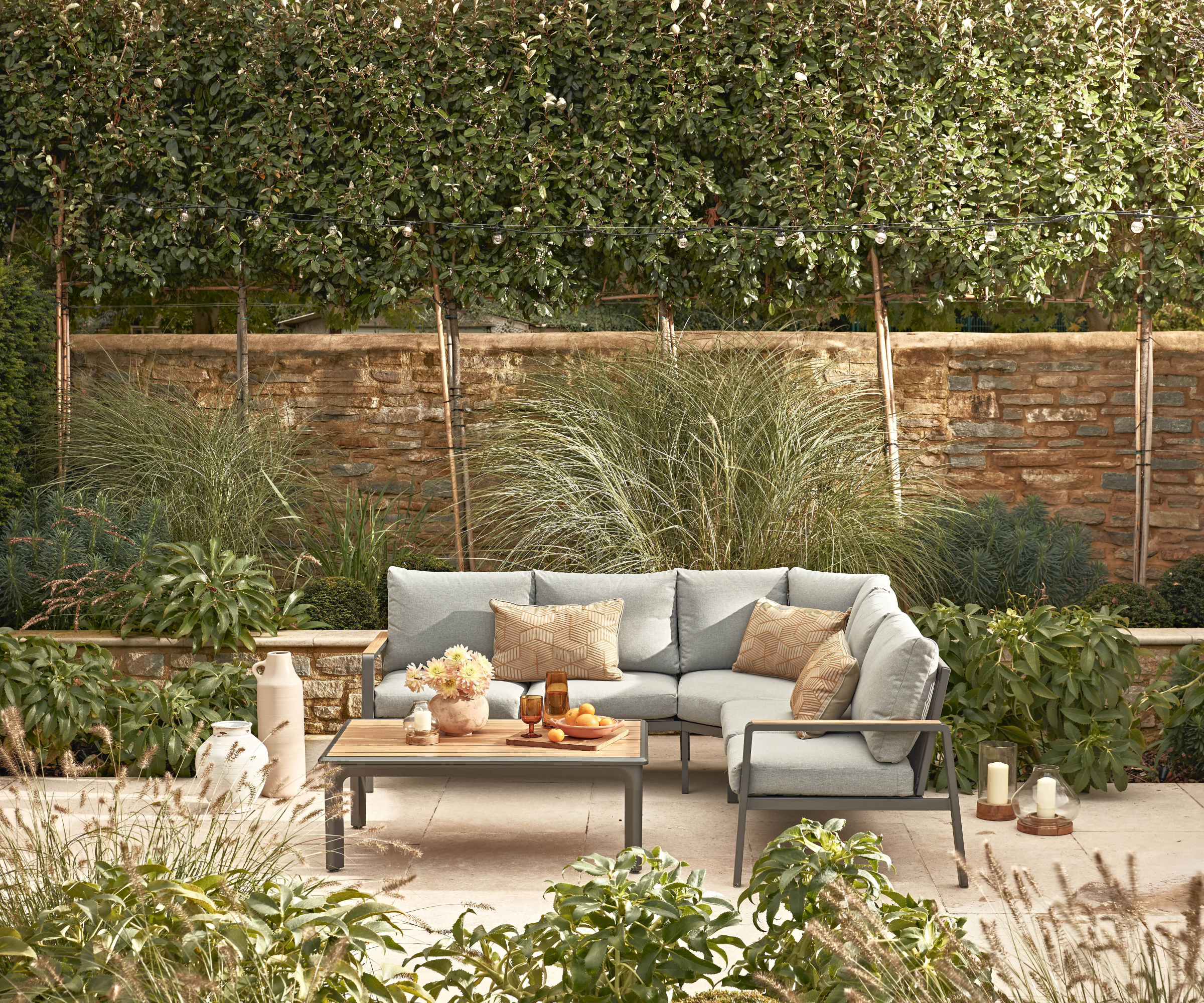
3. Consider the shape and size of your patio
"The size of a patio very much depends on the size of your garden and the intended purpose of the patio," says Isabel Fernandez "For example a space to socialise and gather friends and family round with an outdoor dining area will need to be bigger than a small space intended for a set of bistro table and chairs. Smaller patios generally start at around 8-10m2 in area, but some bigger patios could be up to 50m2+ in size."
When considering patio sizes remember you can also opt for several smaller patio areas, each with a different use in mind rather than one big one. This is a clever design feature that helps your garden feel so much more interesting than one large expanse of patio slabs.
There is so much more to patio design than simply sticking with a traditional square or rectangular shape. A round or curved space can create a more intimate and inviting feel, while a split-level or raised patio takes the design up a notch.
4. Choose your patio materials carefully
Choose a hardscaping material with budget, style and upkeep in mind. Think about how much maintenance you're prepared to do, taking into account tasks such as regular sweeping, sealing and cleaning. This is often dictated by the garden paving surface you choose, so it's important to decide on the right finish for your project from the get-go.
"The materials you choose for your patio will affect not just the style, but also the durability and maintenance required," says John Small. "Popular options include concrete, stone, pavers and gravel."
Concrete is affordable, durable and customisable, but it might need sealing to prevent stains. Natural stone like slate or granite offers a premium look and long-lasting finish, but is more expensive and may need sealing.
"Pavers are a versatile mid-range option, easy to replace if damaged and great for drainage, but can be prone to weeds between the joints," adds John. "Gravel is a budget-friendly alternative which is great for drainage, but it can shift underfoot."
Porcelain paving is a good option for a more modern finish and can be one of the easiest materials to keep clean.
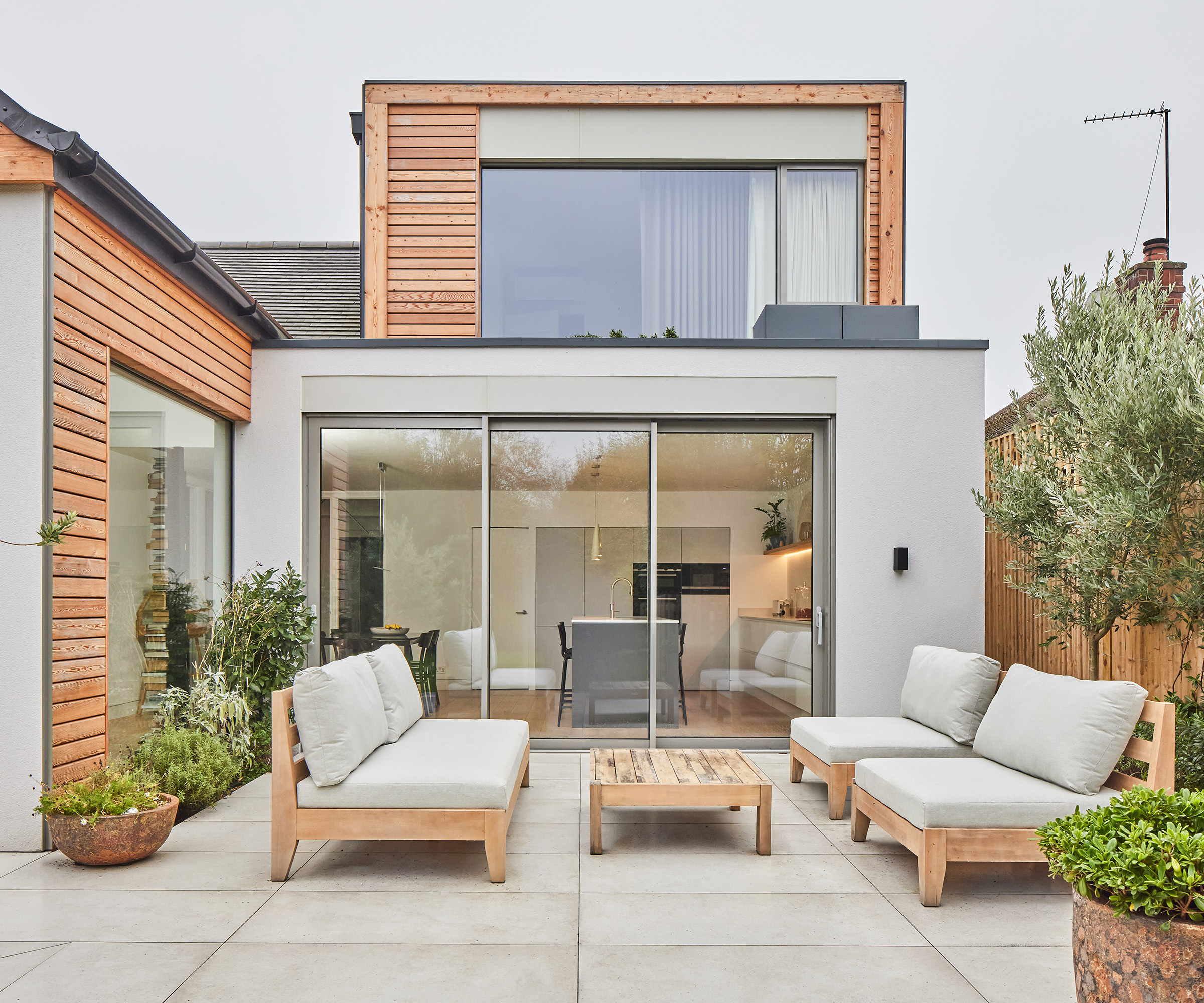
5. Prepare the ground for your patio
"When preparing the ground for laying a patio, you will need to ensure the ground is level and flat, and prepare with a sub-base of compacted hardcore followed by a full bed of mortar for fixing," says Isabel Fernandez. "If installing onto a newly poured concrete base, ensure it is fully dry and has been prepped, following recommendations from the installer or manufacturer of the concrete base."
The right base for a patio depends on the installation method you are using and the existing space you are building a patio on, advises Isabel. Many new builds may already have a poured concrete base as a substrate for paving. It is not essential to have a concrete base for a patio and it is more common to use compacted hardcore as a sub-base followed by a full bed of mortar to fix your slabs.
6. Include sufficient drainage in your patio design
"It's important to consider drainage when you're thinking about how to design a patio, especially for larger areas of patios or if the threshold of the patio joins to your house, such as a kitchen extension with bifolds or patio doors," says Isabel. "A professional installer should be able to advise on which drainage is appropriate for your patio."
In this patio (below) by garden designer Katie Moyes of Tapestry Design Studios the linear drain is integral to the design. The drain is from Aco with a stainless-steel grate, incorporated into the buff-coloured porcelain slabs from London Stone. Katie advises that the drain needs to be set to a fall and connected correctly into drainage bedded down on concrete.
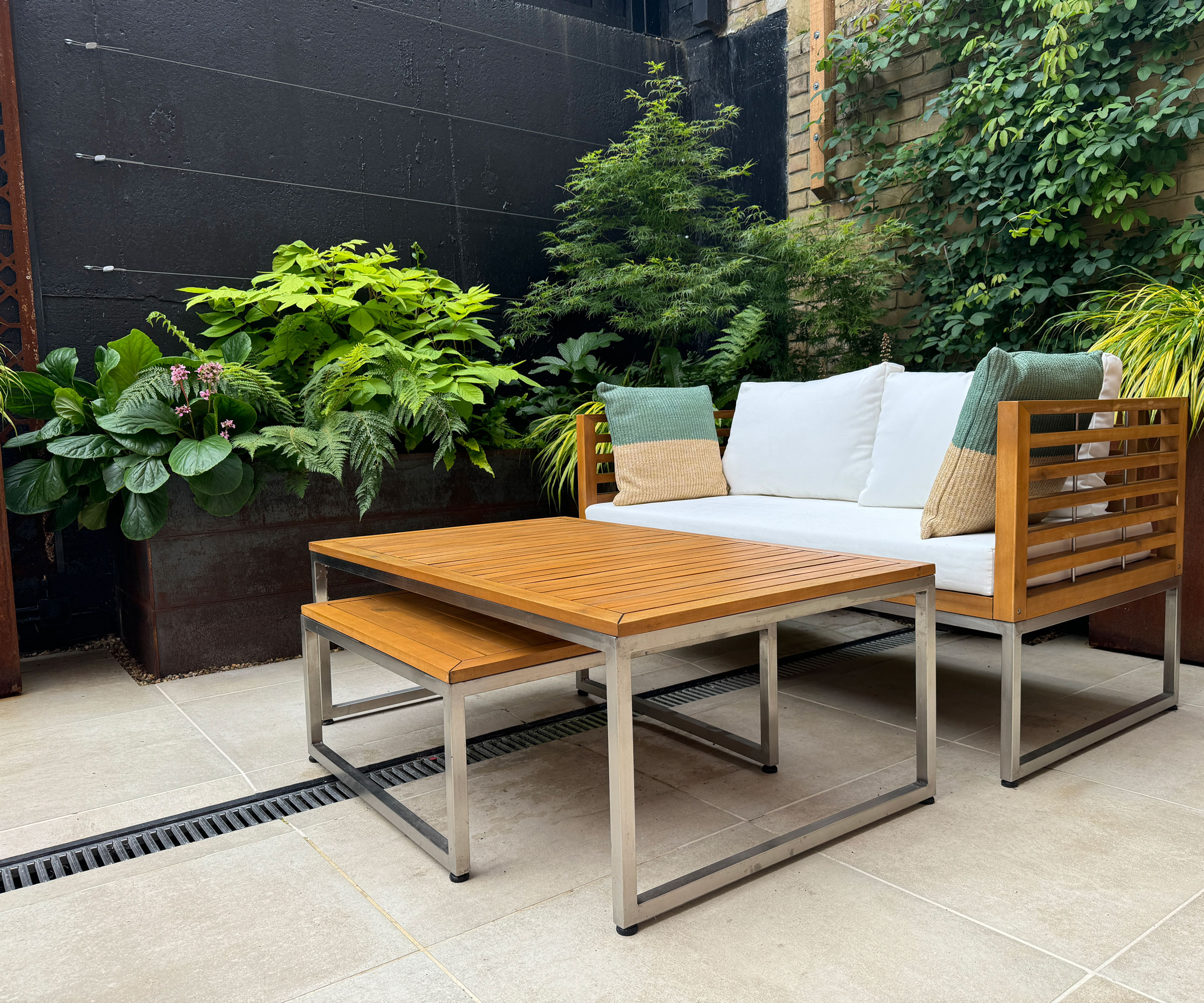
7. Don't forget about power and lighting
If the patio’s going to be used at night or you want to include some outdoor kitchen ideas, it's easier to run cables for lighting and power at the start of the project before the hardscaping is laid. Thoughtfully chosen patio lighting ideas are essential to enhance your patio in a way that's both beautiful and functional.
"Patio lighting should do more than just illuminate," says Julian Page, head of design at BHS. "It should set the mood, enhance safety and bring style to your outdoor space. Whether it’s string lights for a soft, ambient glow or wall-mounted fixtures to frame a seating area, the right lighting transforms a patio into a welcoming retreat.”

Julian Page has been head of design at BHS for 23 years. As a designer, it's important for Julian and his team to stay up-to-date on all the latest trends, therefore his detailed knowledge in all aspects of lighting and the lighting industry are instrumental in the success of the company.
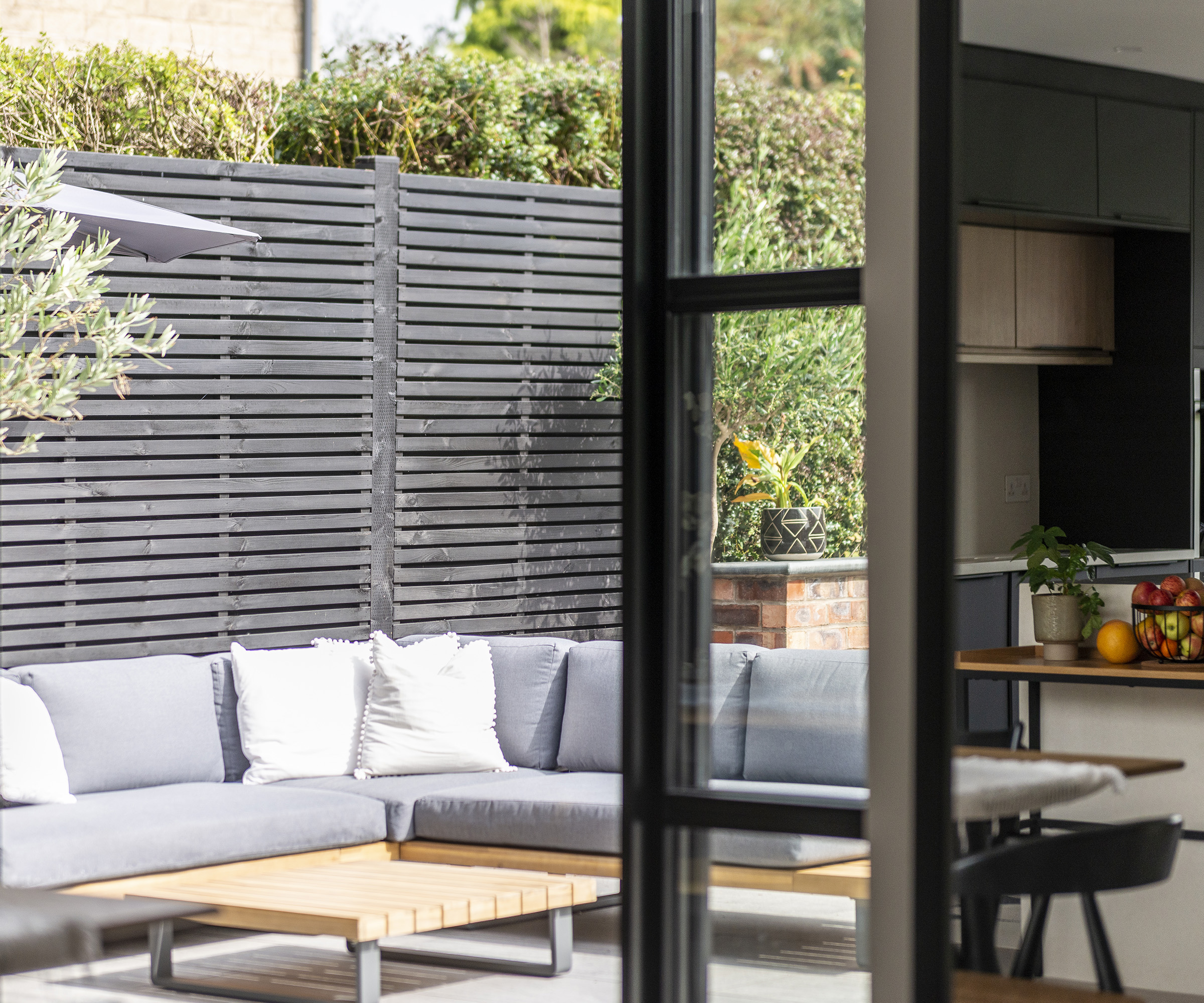
8. Consider privacy and shade
Using strategically placed decorative screens and privacy fence ideas to make your patio feel more private is a common design trick, particularly for overlooked spaces. When positioned in the right way, screens can give you much-needed seclusion and help to zone a garden. Featuring ornamental laser-cut patterns and materials such as metal and wood, they add a design element to patio spaces too.
Alternatively include a pergola or awning in your patio design, particularly if you prefer a shady space or are planning to use the patio regularly in the middle of the day for lunch. If you're planning on attaching a pergola to your house be aware of planning issues.
“It’s really important that you are fully aware of any rules and regulations in your area when it comes to installing new structures such as a patio cover," says Ammar Nova, design expert at Pergolux UK. “If in doubt about whether an installation would be permitted make sure you seek advice from local planning authorities.”

Ammar Nova is an indoor-outdoor living design expert for Pergolux UK, transforming outdoor spaces into stunning, structured oases. With a keen eye for detail, he helps clients craft breathtaking landscapes that blend beauty, function, and tranquility.
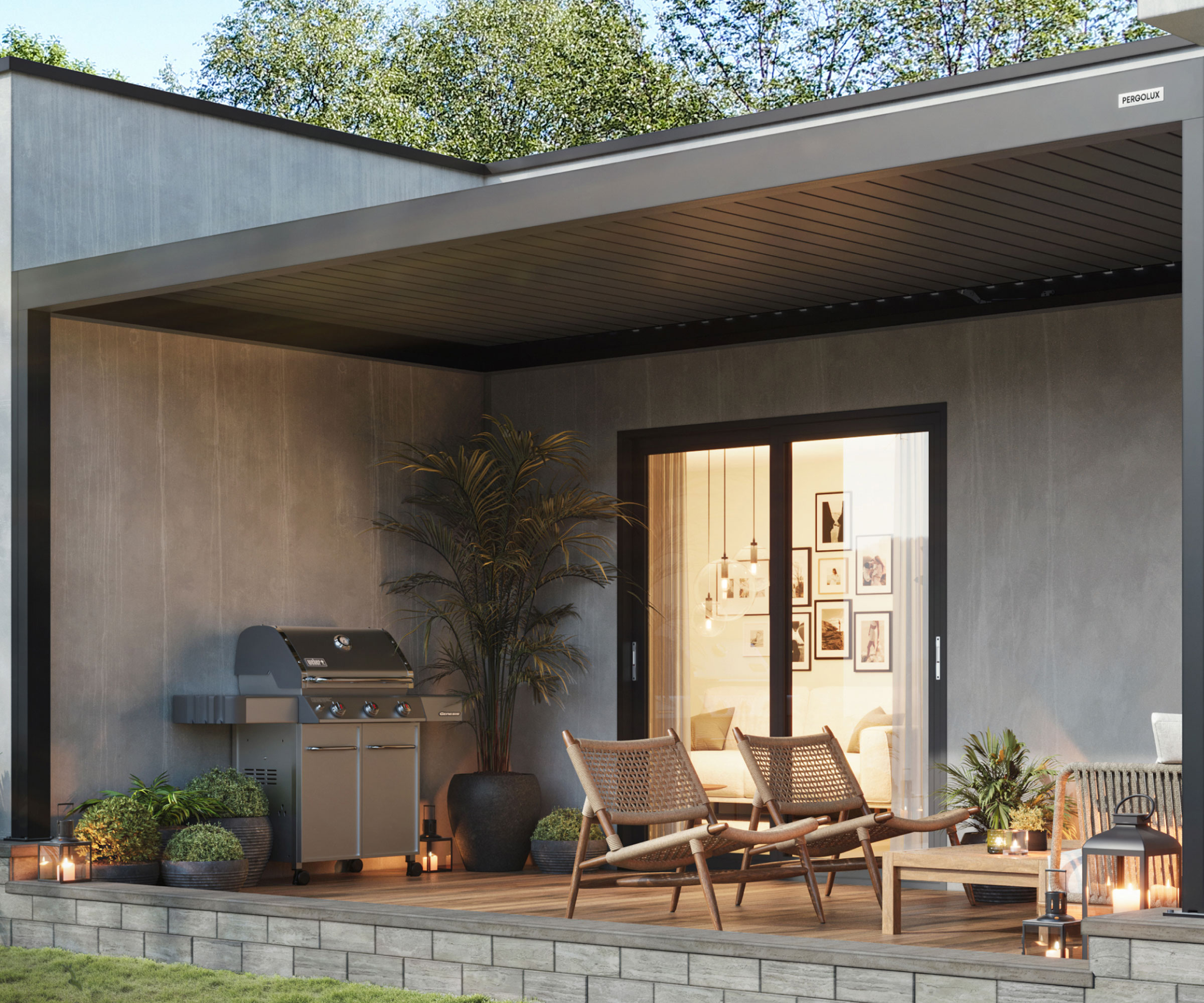
9. Plan your patio planting
Plants are super important when you're thinking about the best way to design a patio. They allow you to max up the space with a lush and leafy scheme using planting pockets in the hardscaping or alternatively a selection of gorgeous blooms in container displays.
Look for patio planting ideas that create a more immersive experience, helping to bring the garden closer to the house. Another way of achieving a natural connection is with living walls, which are a good idea to consider if your patio has limited space.
Planting can also be an effective patio edging idea, helping to separate the patio from other areas of the garden such as the lawn.
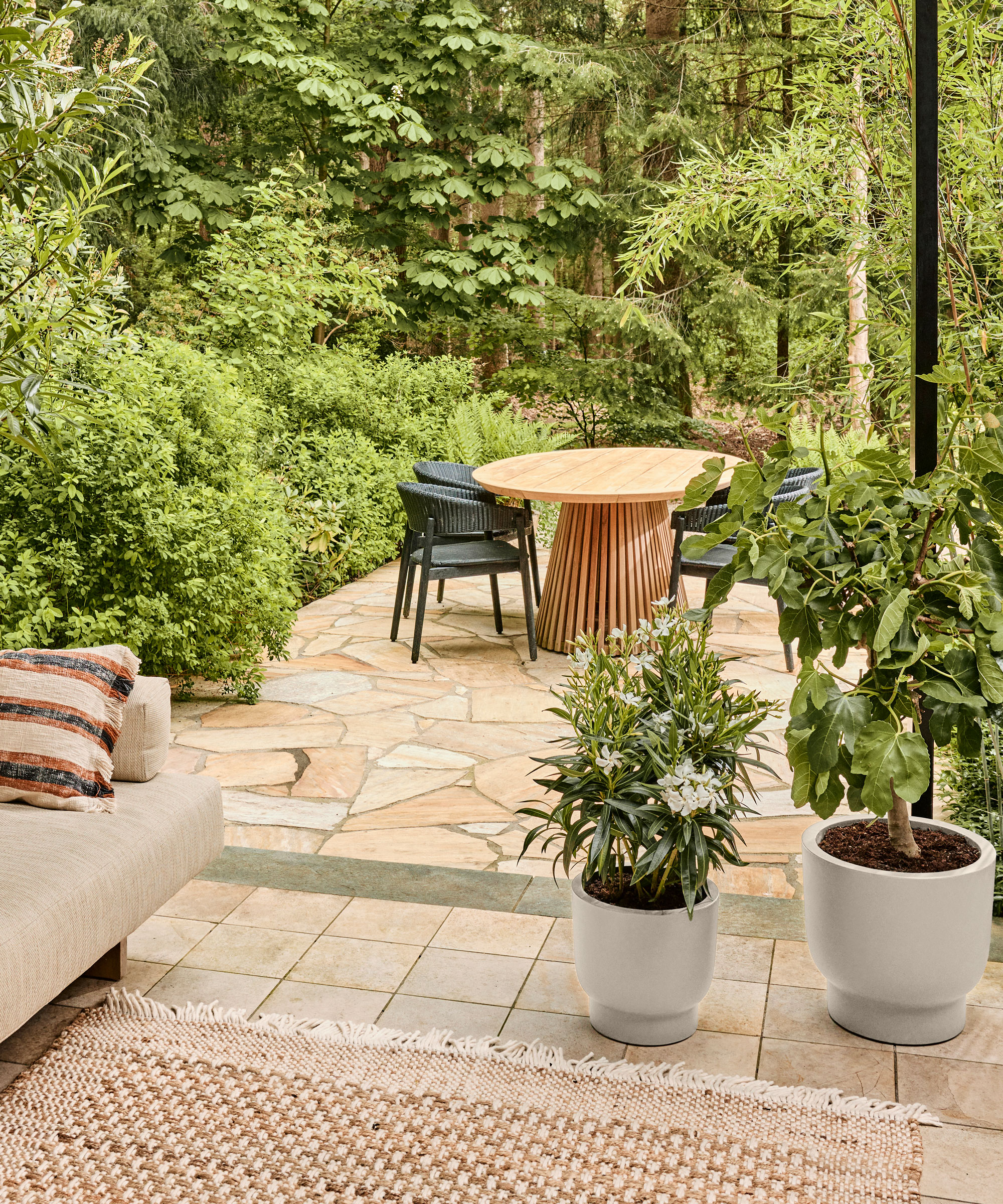
New patios can be expensive, so if you're concerned about how much a patio costs, there are some simple ways you can reduce your costs. Budget patio ideas include using reclaimed or secondhand slabs, as well as sand, cement and other materials left over from building jobs in your neighbourhood that are being given away free.
Whether you want to design a new patio from scratch or are considering an upgrade, factoring in the cost properly will help turn your dream into reality.

Lifestyle journalist Sarah Wilson writes about garden design and landscaping trends. She has studied introductory garden and landscape design, and also has an RHS Level 2 qualification in the Principles of Plant Growth and Development. Sarah is a regular contributor to Homes & Gardens and Livingetc, and has also written for Modern Gardens, Country Living, and Country Homes & Interiors magazines.
